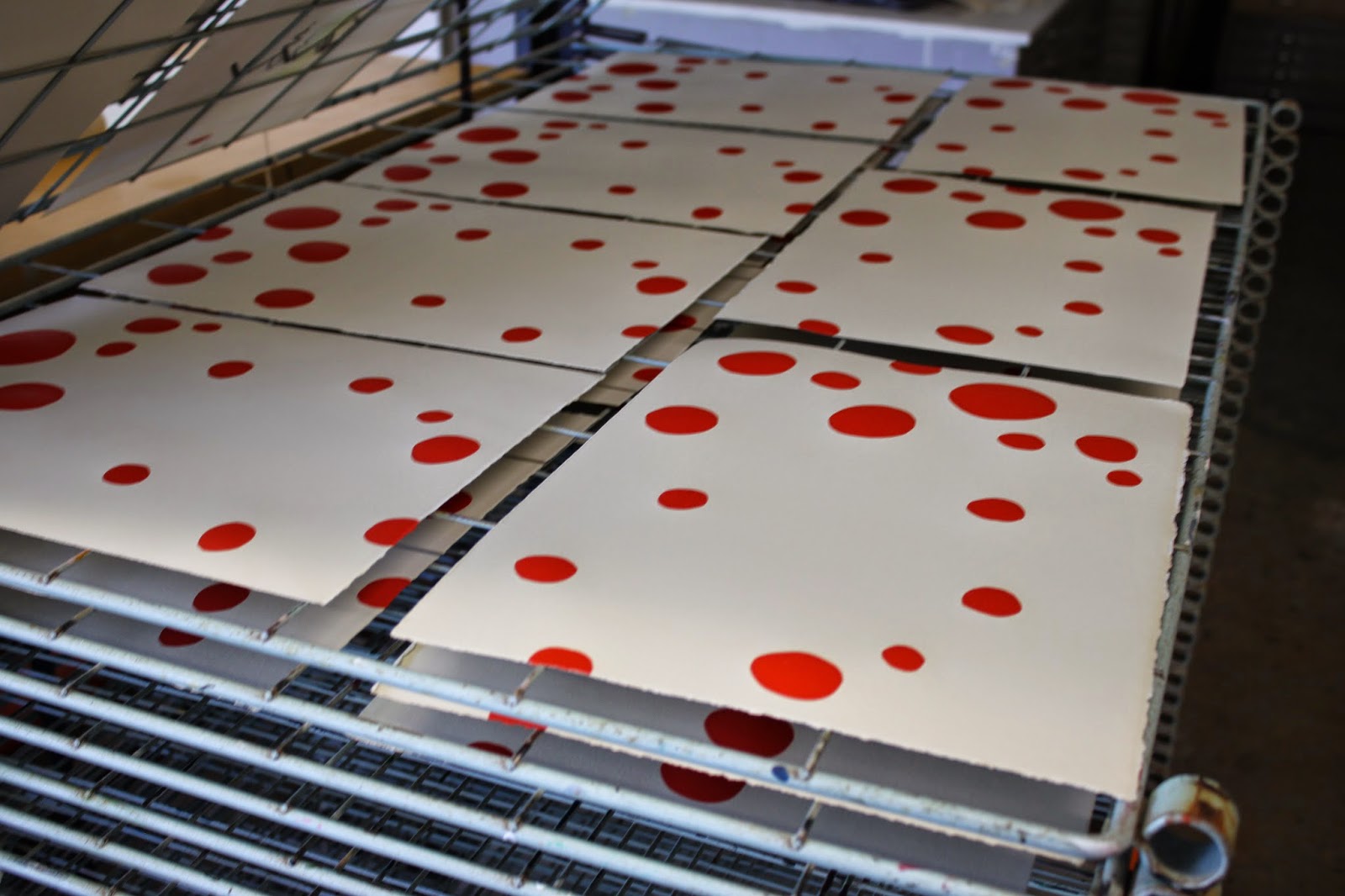After spending a magical week in Japan (blog post to follow) I am back teaching and preparing myself for another day in the studio this upcoming weekend. Until then I am going to continue to write and post about this print series in an effort to catch to where I actually am (my posts are a few weeks past due, whoops!) After such a dark, heavy print as was Cotard Delusion, this new print is much lighter but no less chaotic. The hand drawn lines are meant to be an artist's interpretation of a mental illness, personality disorder, etc as an abstract landscape. Each individual's experience with mental heath is unique and the goal of this work is bring attention to these unique experiences as right or wrong but to be viewed through a lens of acceptance.
As you may have noticed I am trying to stick to very specific colors for this series. The first print and letter of the alphabet, Asperger's Syndrome, started with the color red. I used this color because it is the first color in ROYGBIV also known as the visible light spectrum. If you read my artist's statement the use of the colors becomes clear. The second print, Bipolar Disorder, used a lighter, slightly more orange red and the third print, Cotard Delusion, becomes even more orange still. The color shift will continue so on and so forth till I reach the 26th print, letter Z, which will end in a lovely violet. Thank you for reading! I will update you on art, travel and teaching again soon! Thanks for reading!
***
On the Spectrum is a 26 part print series, one for each letter of the alphabet, that explores interactions of mental illnesses, developmental disorders and perceived normalcy as abstract landscapes. Please read my artist Statement for more details.
On the Spectrum is a 26 part print series, one for each letter of the alphabet, that explores interactions of mental illnesses, developmental disorders and perceived normalcy as abstract landscapes. Please read my artist Statement for more details.
***
Artist Statement: There is a strange disconnect between mental illness and normalcy – as if there is a stark dividing line between the two: Black and white, us and them, completely separate. I believe this arbitrary classification, ill, healthy, recovering... is very similar to how we catalog our colors: blue, red, green... The visible color spectrum reflects the human experience. An experience where colors cannot be contained as single, definable points. The spectrum is one band of ever shifting, transitioning hues, as are we – our lives and our experiences are continuous and overlapping, yet discreet.
We all exist in a world with other people. We interact daily with a wide range of personalities. It is not possible to limit your experience to “normal.” We are but one piece in the cosmos. No one exists in a vacuum. So instead of pushing past others whose mental or physical health might not reflect exactly our own, we must embrace.
We are made of many parts: our personalities, our bodies, and our world.
We all exist in a world with other people. We interact daily with a wide range of personalities. It is not possible to limit your experience to “normal.” We are but one piece in the cosmos. No one exists in a vacuum. So instead of pushing past others whose mental or physical health might not reflect exactly our own, we must embrace.
We are made of many parts: our personalities, our bodies, and our world.
***
On The Spectrum (Dissociative Identity Disorder)
2015
Screen Print on Paper
15" x 11"
$100 (unframed)
Details:
Characteristics:
Dissociative identity disorder (DID), previously known as multiple personality disorder (MPD), is a mental disorder on the dissociative spectrum characterized by at least two distinct and relatively enduring identities or dissociated personality states that alternately control a person's behavior, and is accompanied by memory impairment for important information not explained by ordinary forgetfulness.
Dissociation, the term that underlies the dissociative disorders including DID, lacks a precise, empirical and generally agreed upon definition.[7][16][17] A large number of diverse experiences have been termed dissociative, ranging from normal failures in attention to the breakdowns in memory processes characterized by the dissociative disorders. Thus it is unknown if there is a common root underlying all dissociative experiences, or if the range of mild to severe symptoms are a result of different etiologies and biological structures
"The ICD-10 Classification of Mental and Behavioural Disorders". World Health Organization.
Lynn, SJ; Berg J; Lilienfeld SO; Merckelbach H; Giesbrecht T; Accardi M; Cleere C (2012). "14 - Dissociative disorders". In Hersen M; Beidel DC. Adult Psychopathology and Diagnosis. John Wiley & Sons. pp. 497–538. ISBN 1-118-13882-1.
***
Details of the print are also available on society6:
Don't forget to follow me on instagram if you'd like!
Mahalo for looking!
Boz Schurr
All work is copyright 2015 Boz Schurr. Please do not use without my permission. Mahalo!



















